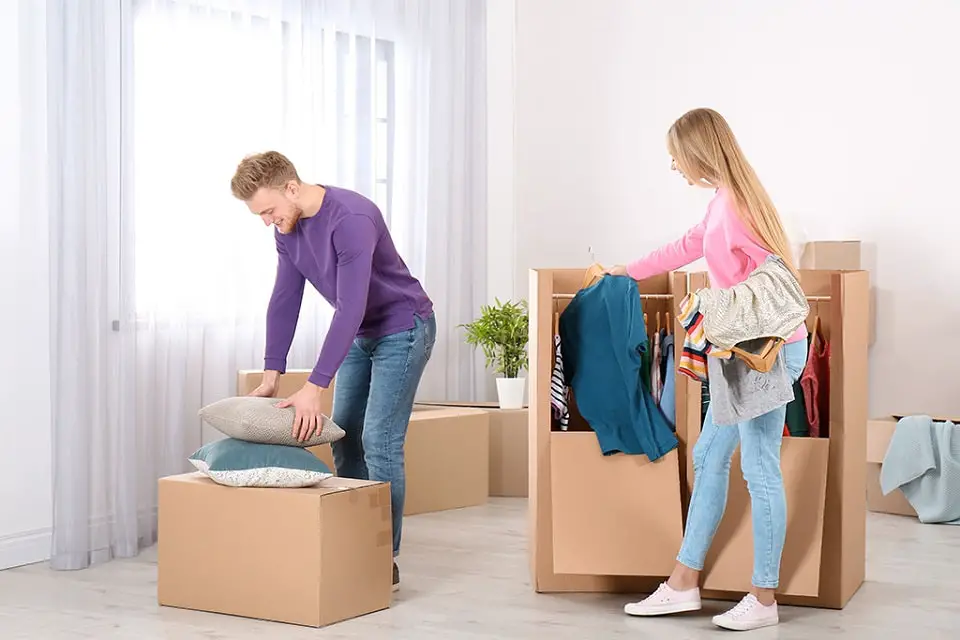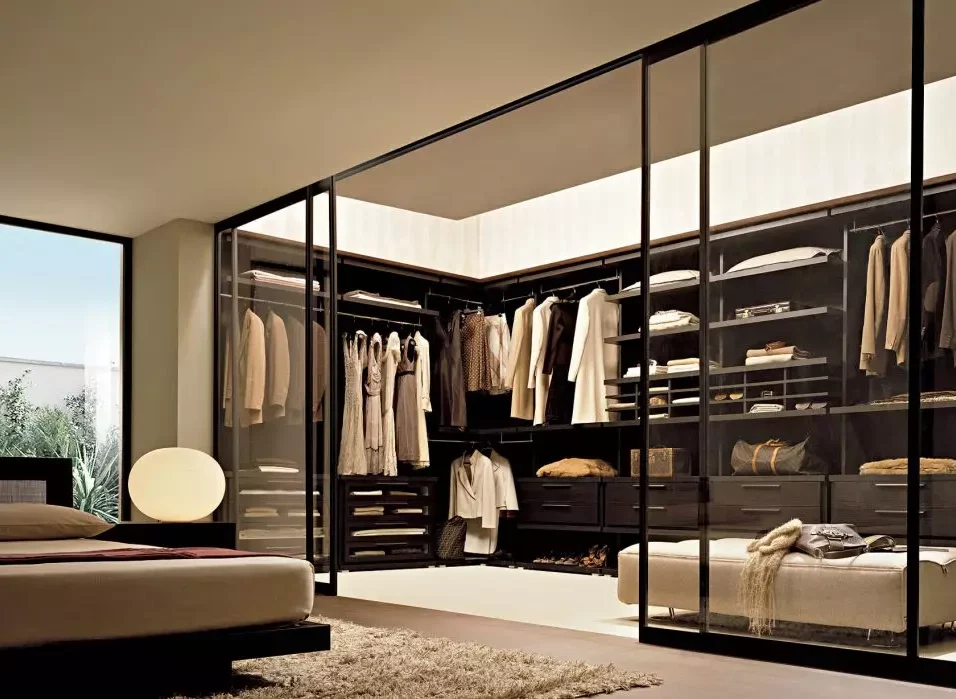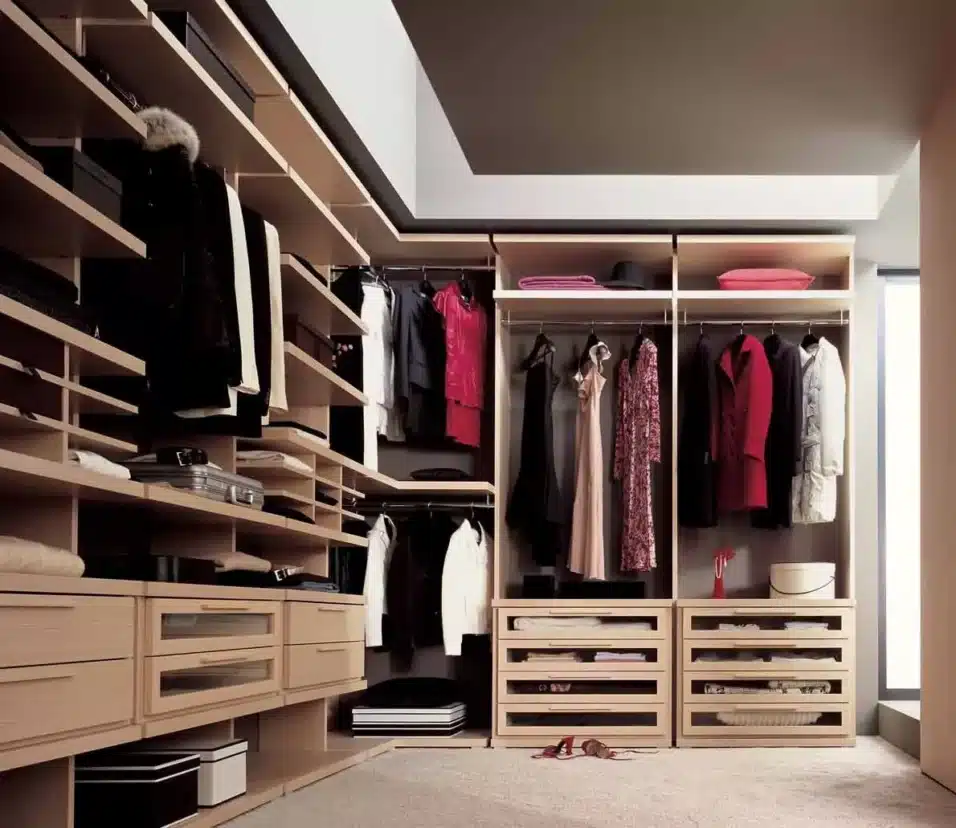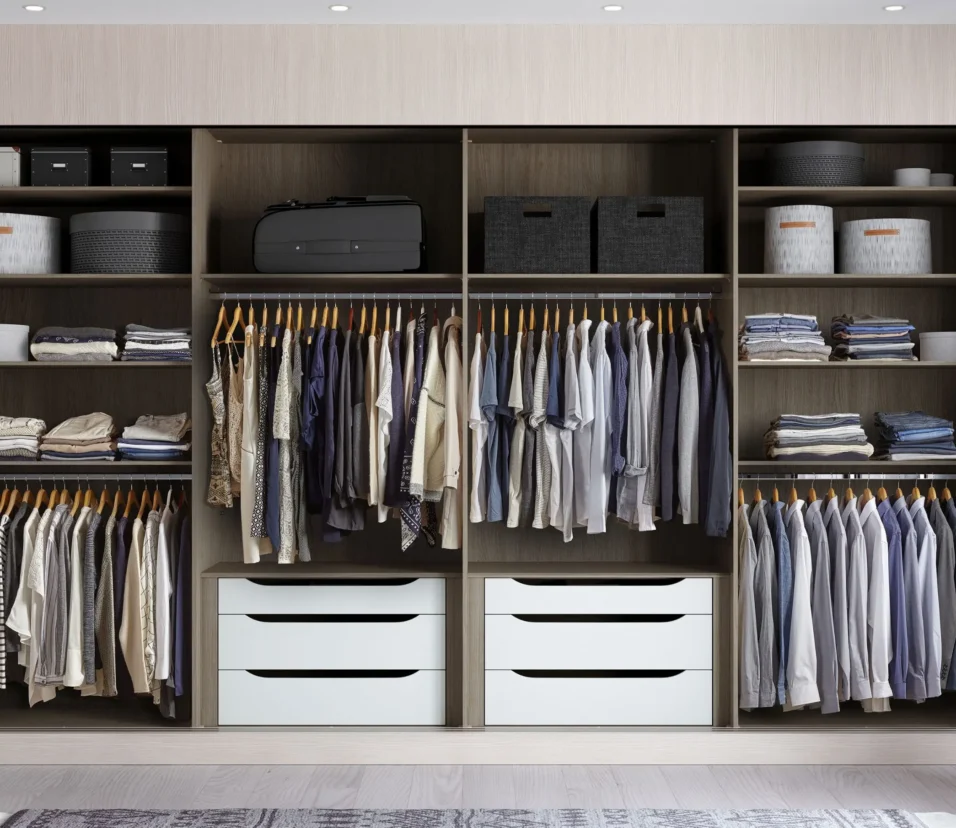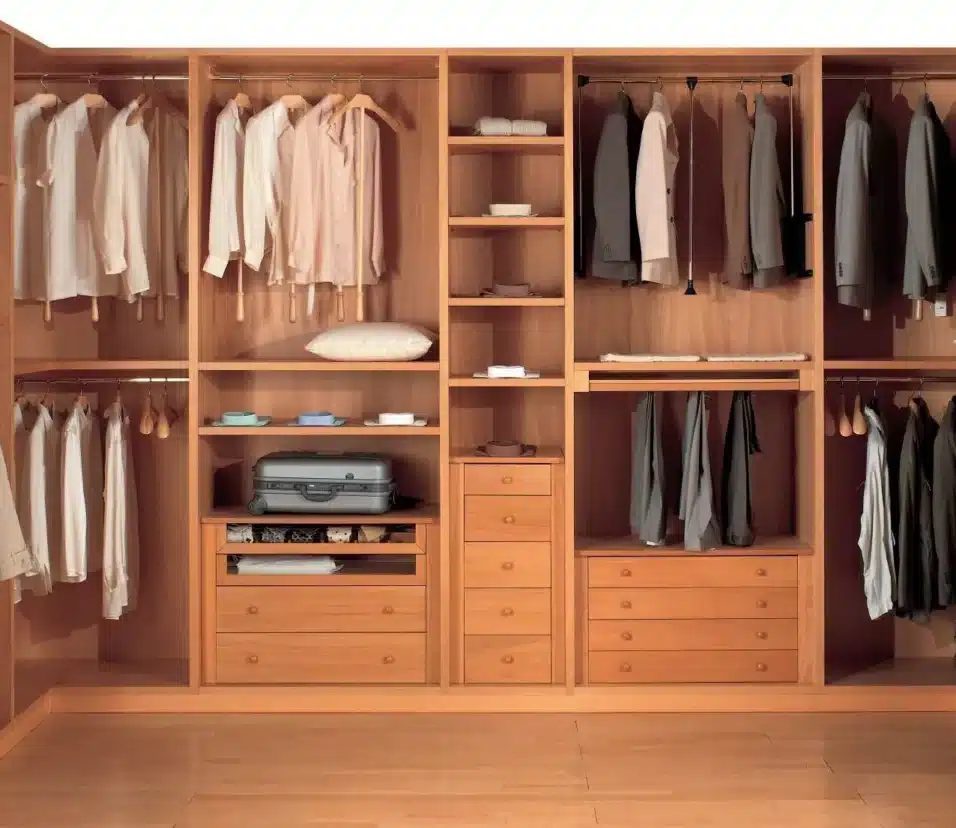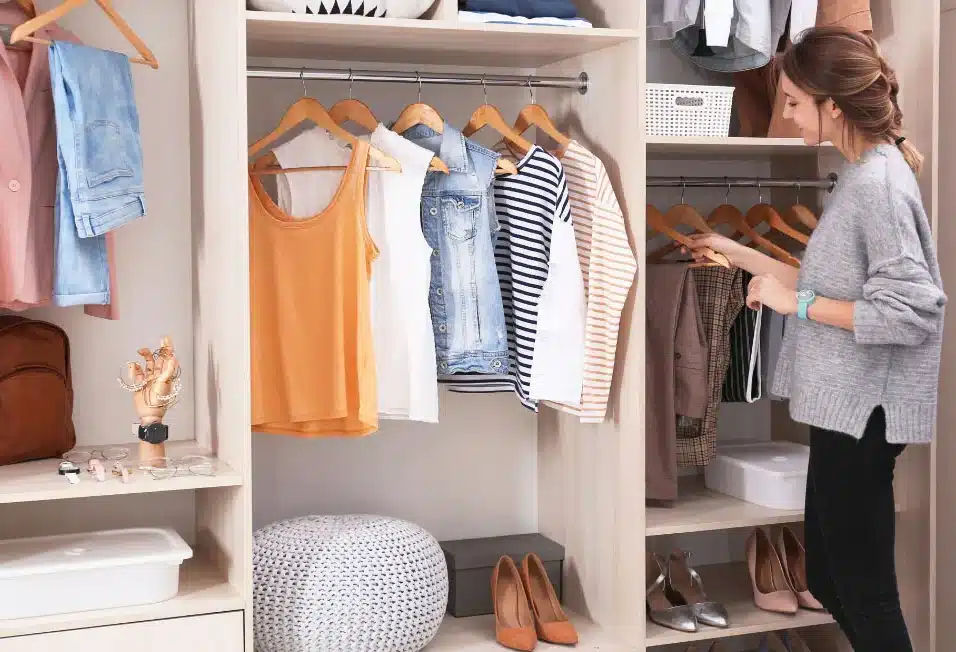How To Pack A Wardrobe Box
Introduction
How To Pack A Wardrobe Box: The ultimate guide on how to pack a wardrobe box! Moving can be a daunting task, especially when it comes to organizing and protecting your clothing during the transition. That’s where wardrobe boxes come to the rescue. These specialized boxes are designed to simplify the packing process for your hanging clothes, ensuring they stay wrinkle-free and well-organized throughout the move.
Moving can be thrilling and intimidating, but with the appropriate strategies, you can keep your clothes in perfect shape. Wardrobe boxes take care of your hanging clothing, keeping them neat, wrinkle-free, and ready to wear once you’ve settled in. We’ll walk you through each stage, helping you gather resources, prepare wardrobe items, and maximize wardrobe boxes. So, let’s delve deeper into the art of packing and discover how to pack your downsize wardrobe with precision and finesse.
This comprehensive guide is your roadmap through the entire process, equipping you with the knowledge to gather the necessary materials, prepare your wardrobe pieces meticulously, and maximize the potential of your wardrobe boxes. Whether you’re an experienced mover or a first-timer, mastering the art of wardrobe box packing will not only simplify the moving ordeal but also facilitate a smooth transition into your new environment. So, let’s embark on this journey together and unravel the secrets of packing a wardrobe box to perfection.
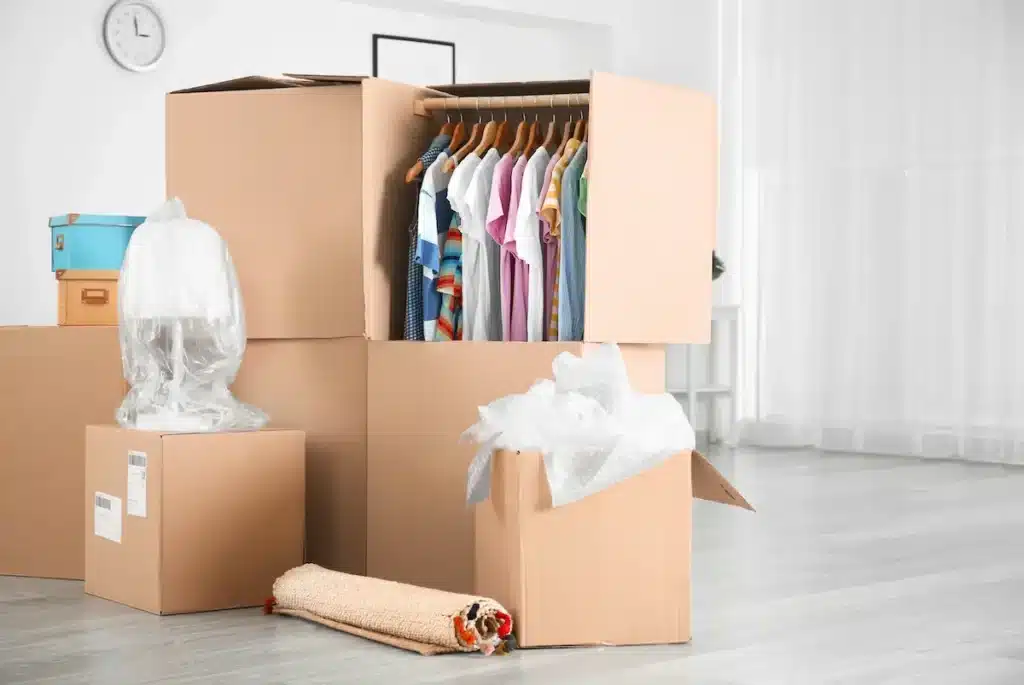
How much can you pack in a wardrobe box?
You will need 1 wardrobe box for every 2 feet of clothes. So, get out your tape measure, head to your closet, and measure how many feet of clothes you have, then divide by two. Add in an extra wardrobe box if your closet clothes are jammed very tight together to provide some space in the box.
Box Size and Type: Wardrobe boxes come in various sizes, typically ranging from around 18 to 24 inches in width, 21 to 24 inches in depth, and 45 to 48 inches in height. The larger the box, the more clothing it can hold. Some wardrobe boxes also include a metal hanging bar, which allows you to hang your clothes just as they would be in your closet.
Clothing Types: The types of clothes you’re packing also affect the capacity of the box. The latter might take up more space and require additional boxes.
Efficient Packing: Additionally, using vacuum-sealed bags for items like blankets or linens can help save space.
Overpacking Considerations: While wardrobe boxes are designed to hold a reasonable amount of clothing, it’s important not to overpack them. Overstuffing a box can result in difficulty carrying and potentially damaging the clothes.
What is the best way to pack boxes?
Wrap the heaviest items first using bubble wrap or packing paper, then place them in the bottom of the box. Wrap lighter items with bubble wrap or packing paper and separate them from items in the bottom of the box with cushion foam. Before closing your box, cushion the entire package.
Gather Supplies: Before you start packing, gather all the necessary supplies such as sturdy cardboard boxes in various sizes, packing tape, bubble wrap, packing paper, markers for labeling, and any specialized packing materials you might need.
Sort and Declutter: Begin by sorting your belongings into categories. Take this opportunity to declutter and get rid of items you no longer need or use. This will reduce the volume of items you need to pack and save space in your new space.
Use the Right Box Sizes: Select boxes of appropriate sizes for different items. Heavier items should be packed in smaller boxes to prevent them from becoming too heavy, while lighter items can go in larger boxes.
Heavy Items at the Bottom: Place heavier items at the bottom of the box to create a stable base. This helps distribute the weight evenly and prevents fragile items from getting crushed.
Is it OK to pack clothes in boxes?
Without a doubt, boxes are the most common way to pack your clothes during a move. Most people use small to medium boxes for packing clothes as larger boxes can quickly become too heavy. Boxes are easy to label which will make unpacking later easier.
Protection and Organization: Boxes provide a protective barrier against dust, moisture, and potential damage during transportation or storage. By neatly folding or rolling your clothes and placing them in boxes, you’re ensuring that they remain in good condition and are ready to wear when needed.
Maximizing Space Using boxes allows you to maximize the available space in your moving truck, storage unit, or closet. Uniformly sized boxes can be stacked efficiently, making the most of the available vertical space.
Easy Labeling: Labeling boxes with their contents and the rooms they belong to makes the unpacking process much smoother. This way, you’ll be able to locate specific clothing items without having to open every box.
Efficient Loading and Unloading: When it comes to moving, boxes are easier to carry and load onto a truck compared to loose items or hangers. This can speed up the moving process and make it more manageable for you and your movers.
Is a wardrobe moving box worth it?
Not everyone needs wardrobe boxes when they move. For clothes that sit in your dresser, regular cardboard moving boxes or plastic storage boxes will suffice. However, if you have hanging clothes, wardrobe boxes will help keep them wrinkle-free and streamline the packing and unpacking process.
Preserve Clothing Quality: Wardrobe boxes come with a built-in metal hanging bar, allowing you to hang your clothes just as they would be in your closet. This feature helps prevent creases, wrinkles, and damage to your clothing during the move. If you value the condition of your clothes and wish to minimize ironing and maintenance upon arrival, wardrobe boxes are a worthwhile investment.
Efficient Organization: Wardrobe boxes make packing and unpacking a breeze. Your clothes remain organized and easily accessible, allowing you to transition seamlessly into your new space. This level of organization is especially valuable if you have a substantial wardrobe or if you’re moving with a specific schedule in mind.
Time Savings: Packing and unpacking clothes can be time-consuming, especially when using regular boxes and hangers. Wardrobe boxes eliminate the need to remove clothes from hangers and fold them before packing, saving you valuable time and effort.
Can you put shoes in the bottom of a wardrobe box?
Surprisingly, wardrobe boxes can be used for more than just clothes, too! You can add shoes at the bottom of the box, purses, sheets, towels, or blankets, too! Load the pillows, shoes, or other items that will lay on the bottom of the box.
Protection: Shoes, especially delicate ones or those with embellishments, can be vulnerable to damage during a move. Placing them at the bottom of the box provides a cushioning effect, with the weight of the clothes above offering protection against impacts and potential scuffing.
Organization: Grouping your shoes together at the bottom of the wardrobe box helps you maintain organization during the packing process. By separating your shoes from your hanging clothes, you’ll be able to unpack and arrange your footwear more easily at your new home.
Accessibility: Placing shoes at the bottom of the box doesn’t mean they’re difficult to access. In fact, they’re quite accessible, and you won’t have to sift through multiple boxes to find your favorite pair. This convenience can make the unpacking process smoother and more efficient.
How many clothes is a full wardrobe?
The researchers found that a “sufficient” wardrobe consists of 74 garments and 20 outfits in total. As an example, they’ve suggested six outfits for work, three outfits for home wear, three outfits for sports, two outfits for festive occasions, plus four outdoor jackets and trousers or skirts.
Basic Essentials:
A full wardrobe generally includes essential clothing items that form the foundation of any outfit. These can include:
- Tops: T-shirts, dress shirts, blouses, sweaters, and cardigans.
- Bottoms: Jeans, trousers, skirts, and shorts.
- Outerwear: Jackets, coats, and blazers.
- Dresses: Depending on personal style and occasions.
- Undergarments: Underwear, bras, and socks.
- Seasonal Variations: A full wardrobe often accommodates clothing for different seasons.
- Summer: Lighter fabrics like cotton and linen, shorts, dresses, and swimwear.
- Winter: Warmer fabrics like wool and thicker coats, sweaters, scarves, and boots.
What are the disadvantages of fitted wardrobes?
Lack of mobility
Fitted wardrobes cannot be moved around if you decide to change the location, they also cannot be taken with you if you decide to move, but most people end up leaving or selling their furniture when they move, as their new home may be a completely different size or style and they prefer new furniture.
Installation Complexity:
The installation of fitted wardrobes requires professional expertise. It involves precise measurements, customization to fit the space, and sometimes even modifications to the existing structure. This complexity can lead to longer installation times and potential disruptions in your living space.
Limited Portability:
Fitted wardrobes are designed to be a permanent fixture in your home. If you decide to move or rearrange your living space, you might not be able to take the fitted wardrobe with you, resulting in a loss of investment.
Design Flexibility:
While fitted wardrobes can be customized to match your specific needs, they might have limitations in terms of design flexibility. If your tastes or needs change over time, making adjustments to a built-in wardrobe might be more challenging compared to rearranging or replacing standalone furniture.
How many pairs of jeans should I own?
Depending on your laundry schedule, you might need more than 5 pairs of jeans. But for most people, 4 to 5 pairs of casual pants, including denim jeans, are all that is needed to look stylish and well dressed. Keep in mind that you don’t need to wash your denim jeans too often.
Everyday Staples: Having a few pairs of jeans that you can wear regularly is a good starting point. This might include classic blue jeans in different washes (light, medium, dark), as well as black or gray jeans. These versatile options can be paired with a variety of tops and shoes for different looks.
Variety of Styles: Consider owning jeans in different styles to cater to various occasions. For example, you might want a couple of slim-fit or skinny jeans for a sleek look, a relaxed or boyfriend fit for a more casual vibe, and maybe even a high-waisted pair for a trendy touch.
Seasonal Considerations: Think about the climate in your area. In colder months, you might opt for thicker denim or jeans with a lined interior, while lightweight and breathable options are preferable for warmer weather.
Dressy Occasions: If you often attend events or occasions that require a dressier look, having a well-fitting, darker wash pair of jeans can be a valuable addition to your wardrobe. These jeans can be easily dressed up with heels and a blouse.
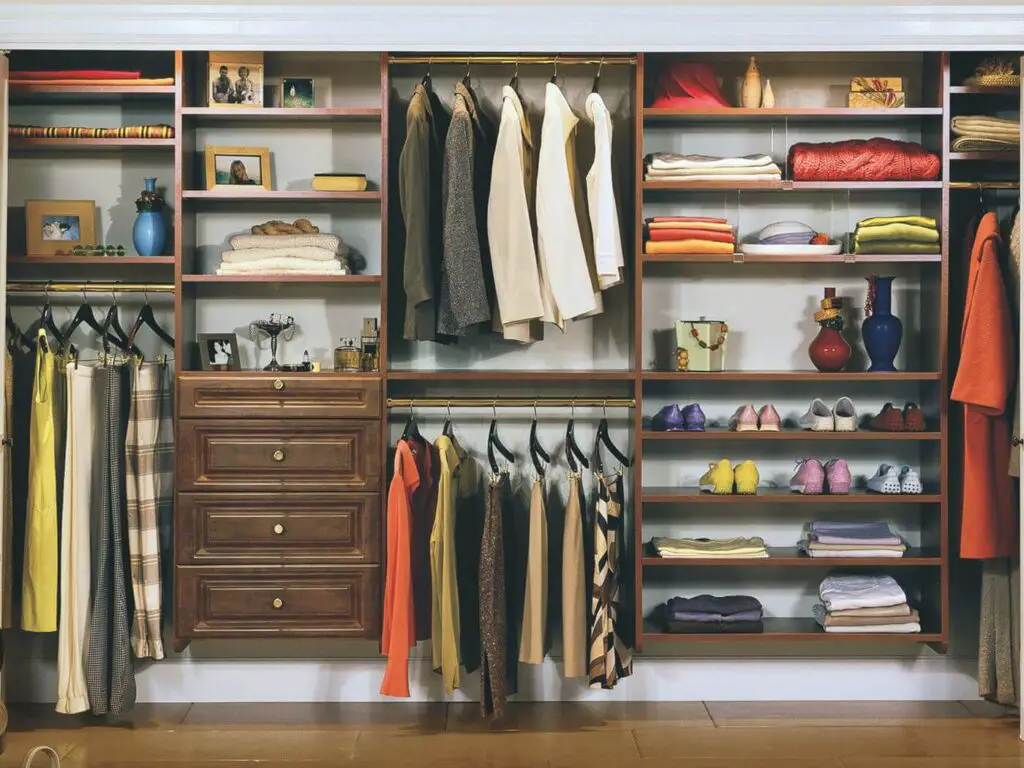
Conclusion
The advantages of using wardrobe boxes extend beyond the move itself, as they make the unpacking process smoother and help you settle into your new environment more quickly. Your clothes will emerge from the boxes as fresh and unblemished as they were before, allowing you to seamlessly resume your routine in your new space.As you venture into your next move armed with the knowledge of packing wardrobe boxes, remember that organization and care are your guiding principles. With each garment carefully hung, protected, and neatly arranged within these specialized boxes, you’re not only ensuring the safety of your clothing but also making a smoother transition to your new chapter. So, whether you’re relocating across town or across the country, embrace the art of packing a wardrobe box to make your move a successful and stress-free endeavor.
The meticulous care you’ve invested in packing your wardrobe box isn’t just about safeguarding fabric; it’s a way of honoring your personal narrative.Through the steps outlined in this guide, you’ve uncovered the nuances of selecting the right box, preserving delicate fabrics, and organizing your clothes with precision. You’ve grasped the concept that wardrobe boxes are more than mere containers; they’re vessels that bridge your past to your future, safeguarding the familiar as you embrace the new.
The knowledge you’ve gained empowers you to not only master the logistics of packing but also infuse intentionality into each step. So, armed with the insights from this guide, embark on your journey with confidence. The well-packed wardrobe box is a reflection of your capacity to adapt, your commitment to safeguarding memories, and your readiness to embrace change.



